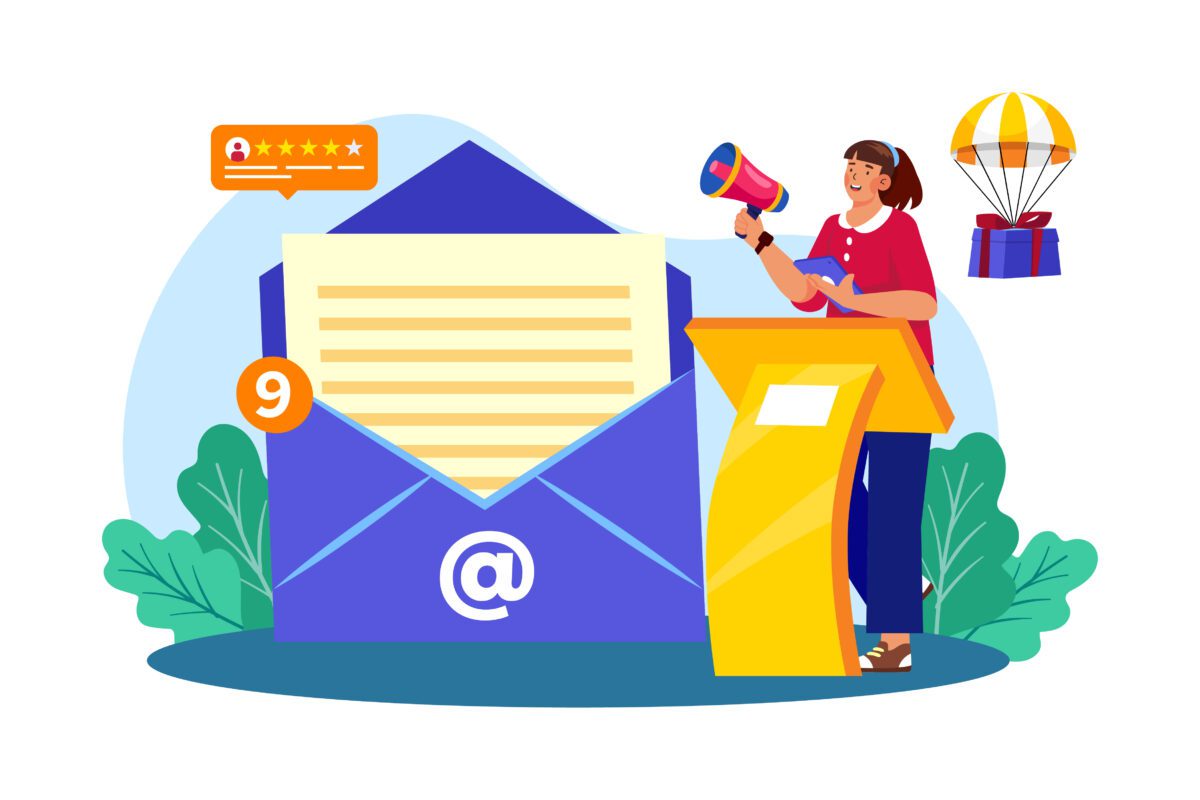Email marketing is a fundamental element of any marketing strategy. When properly executed, this process can bring significant results for the growth of your business. However, even experts can sometimes forget an important detail at the last minute. To avoid these mistakes and optimize your campaigns, we’ve created an essential checklist.
Each step in this checklist has been designed to help you maximize the effectiveness of your emails and avoid common pitfalls. Whether you’re aiming to improve subscriber engagement, increase conversions or boost your brand’s credibility, this checklist is your ultimate guide.
The importance of using a checklist for effective email campaigns
Following a checklist before launching your emails will help you avoid major mistakes that could undermine your effectiveness. You’ll be able to avoid :
- Sendingincorrect information 📉 that could damage your brand’s credibility
- Your emails are marked as spam 🚫 due to technical problems
- Wasting your budget 💸 on a poorly segmented audience
- Violate privacy regulations ⚖️, which could result in fines
A well-structured checklist ensures that every step is covered before sending. This not only saves you time by identifying and correcting errors in advance, but also improves the overall quality of your communications. Ultimately, this translates into a better experience for your subscribers, higher conversion rates and an optimized return on investment for your marketing efforts.
Phase 1: Content review
- Check campaign objectives 🎯
Make sure the email content is aligned with your objectives and goals. For example, if the objective is to increase webinar registrations, the content should explain the webinar topic, highlight speakers, provide logistical information (date and time) and include a clear CTA to register. - Correct grammar and spelling mistakes 🔍
Even minor errors can detract from the professionalism of your email. Carefully proofread every element of your email to ensure it meets your brand’s quality standards. Using tools like Grammarly or Hemingway can help identify and correct errors. What’s more, having a second pair of eyes review your content can often catch errors you may have missed. - Clear, compelling calls to action 📢
Every marketing message should include a strong CTA that clearly defines the next step you want the recipient to take. Use explicit CTAs like “Sign up now” or “Download your copy”.
Phase 2: Design and layout review

- Responsiveness on different devices 📱💻
Check the appearance of emails on multiple screen sizes, such as mobiles, tablets and desktops, to identify any issues with formatting or images not displaying correctly. - Formatting on major email clients 📧
Rendering peculiarities between Gmail, Outlook, Yahoo and others can distort your carefully crafted emails. Send manual tests through the most widely used providers or use online testing tools. - Correct loading of images and graphics 🖼️
Ensure that each image displays, resizes and links as expected in different environments. For fast loading times, compress files and host them on external image servers. - Brand consistency in visuals, colors and logo placement 🎨
Although content is customized for different segments, key visual components such as color schemes, logo placement and image treatment must remain consistent.
Phase 3: Verification of initial contact elements
- Engaging subject line and pre-header text ✉️
An attractive subject line and pre-header text can make the difference between an ignored and opened email. Tailor them to your target audience by using emotional triggers, specifics and urgency cues.
Phase 4: Basic email testing
- Send tests to yourself ✅
Send manual tests to your own accounts to validate the complete user experience in real-life conditions, confirming that links work correctly. - A/B testing to optimize subject lines or content 🔄
Test different versions of critical components like the subject line or layout to determine which works best before a large-scale mailing.
Phase 5: Listing and segmentation
- Review recipient list and segment appropriately 🗂️
Review contact lists to eliminate bounce-prone or irrelevant contacts. Segment subgroups aligned with criteria such as past site behavior, demographics or personalized traits.More information on segmentation here
Phase 6: Deliverability and parameters
- Sender authentication (SPF, DKIM, DMARC) 🔐
Check that technical protocols such as SPF, DKIM and DMARC are fully implemented to ensure quality delivery to targeted inboxes. - Check settings, delivery times and scheduling 🕒
Reconfirm campaign details, such as sender information, contact list, timing for dynamic content updates and delivery schedules.
Phase 7: Legal compliance
- Compliance with email marketing laws (CAN-SPAM, RGPD) ⚖️
Comply with unsubscribe requests immediately and follow essential compliance rules based on regulations in your target country. - Include necessary contact information and unsubscribe link 📩
Make unsubscribing easy with visible, one-click links, and include the sender’s contact information for any questions.
Phase 8: Final review
- Review all elements: content, design, links and functionality 🔍
Methodically double-check each component covered in the previous sections to ensure a consistent connection as a campaign. - Checking tracked links, personalization tokens or dynamic content 🔗
If you’re using links for analytics, merge tags for custom fields or real-time content feeds, check their end-to-end integration.
Phase 9: Approval and dispatch
- Final approval by stakeholders ✅
Once all checklist items have been validated, obtain final approval from key decision-makers. - Schedule or send email campaign 📅
Trigger deployment via email service scheduling tools. Configure drip sequences or automated follow-up messages if required.
Phase 10: Post-shipment follow-up
- Track campaign performance metrics (open rate, click rate) 📊
Monitor key response rates such as opens, clicks and conversions in real time to detect unexpected drops or rises. - Preparing for necessary adjustments based on initial responses 🔄
Use data to guide improvements,Conclusion
Email marketing remains a powerful tool for any business looking to engage and convert its audience. By following this essential checklist, you can minimize errors and maximize the impact of your campaigns. Whether you’re a digital marketing expert or a beginner, this structured method will help you achieve your goals effectively. So take the time to check each step and see the difference it can make to your email success. Don’t wait any longer, put this checklist into practice and watch your results take off! 🚀
1. Why is it important to check legal compliance in email campaigns?
Legal compliance, such as CAN-SPAM and RGPD, is essential to avoid severe fines and protect your brand’s reputation. By complying with regulations, you also ensure the trust and satisfaction of your recipients.2. How can A/B testing improve the effectiveness of my emails?
A/B testing allows you to compare different versions of your email to see which achieves the best results. By testing elements such as subject lines, content or calls to action, you can optimize your campaigns for maximum engagement.3. How important is segmentation of the recipient list?
Segmentation enables you to send more relevant messages to specific groups of your audience. By targeting your emails according to criteria such as past behavior or demographics, you increase the chances of engagement and conversion.4. What tools do you recommend for testing the deliverability of a newsletter?
Tools such as Mail Tester and the built-in previews of the major e-mail services can help you determine whether your e-mails will be considered spam or not.5. Why track performance metrics after sending emails?
Analyzing performance using metrics such as open rate, click-through rate and conversion rate helps you assess the effectiveness of your campaign and identify areas for improvement for future mailings. Reinforce positive aspects and correct negative ones. Tailor messages according to the content appreciated or the issues raised.

